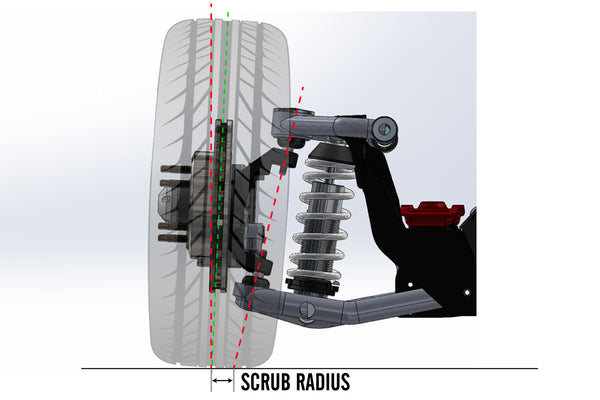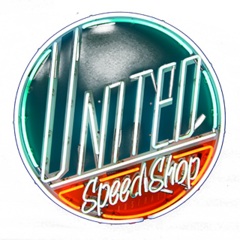Have you ever wondered why most double A-arm front-ends angle the top control arms downward to the rear of the car? This is part of the process of engineering anti-dive characteristics into the front suspension.
If you draw lines from the control arms back to the middle of the car, and find where they intersect, then you can use the height from the ground to calculate the percentage of anti-dive.
Anti-dive aims to stop braking force transferring through the springs and shocks, which can compromise the car’s stability and balance, and put the force through the arms. Think of the rotating inertia as the car travels down the road and, when the brakes are applied, this inertia will try and fold the front-end under the car.
Angling the top control arm helps resist the folding force of the wheel and brakes, improving stability under braking. United Speed Shop Magnum IFS units are designed with four degrees of anti-dive geometry in place, giving a great balance between a front-end that dives heavily under brakes, or over-stiffening the front-end by having too much anti-dive.

SCRUB RADIUS
The science of scrub radius has largely been engineered out of modern cars (many of which actually have negative scrub radii) but anyone who has driven an old car with deep-dish wheels on the front will have experienced why scrub radius is important. Scrub radius is the relationship between the kingpin axis (an imaginary line between the ball joints) and the contact patch of the tyre.
If the kingpin axis intersects the contact patch to the outside of the tyre the vehicle is considered to have negative scrub radius, and if it intersects on the inside it is considered to have positive scrub radius. Whether a car has negative or positive scrub radius either set-ups mean the tyre is not turning on its centreline
Many cars back in the day didn’t have power steering so suspension systems were often designed with positive scrub radius as this makes the car easier to steer at parking speeds.
Modern cars tend to run positive offset wheels to run zero or slightly negative scrub radius, as this leads to more responsive steering and better stability. Cars with excessive negative offset wheels can suffer from issues like deflection when hitting rough roads or puddles. Think of it like how easy it is to hold a heavy weight close in to your body, and then how difficult it is to hold it when your arm is outstretched.We all love seeing deep-dish wheels on our old cars, but as too much dish negatively affects scrub radius - it's a bit of trade off between aesthetics and science, as are a lot of things on modified cars.

